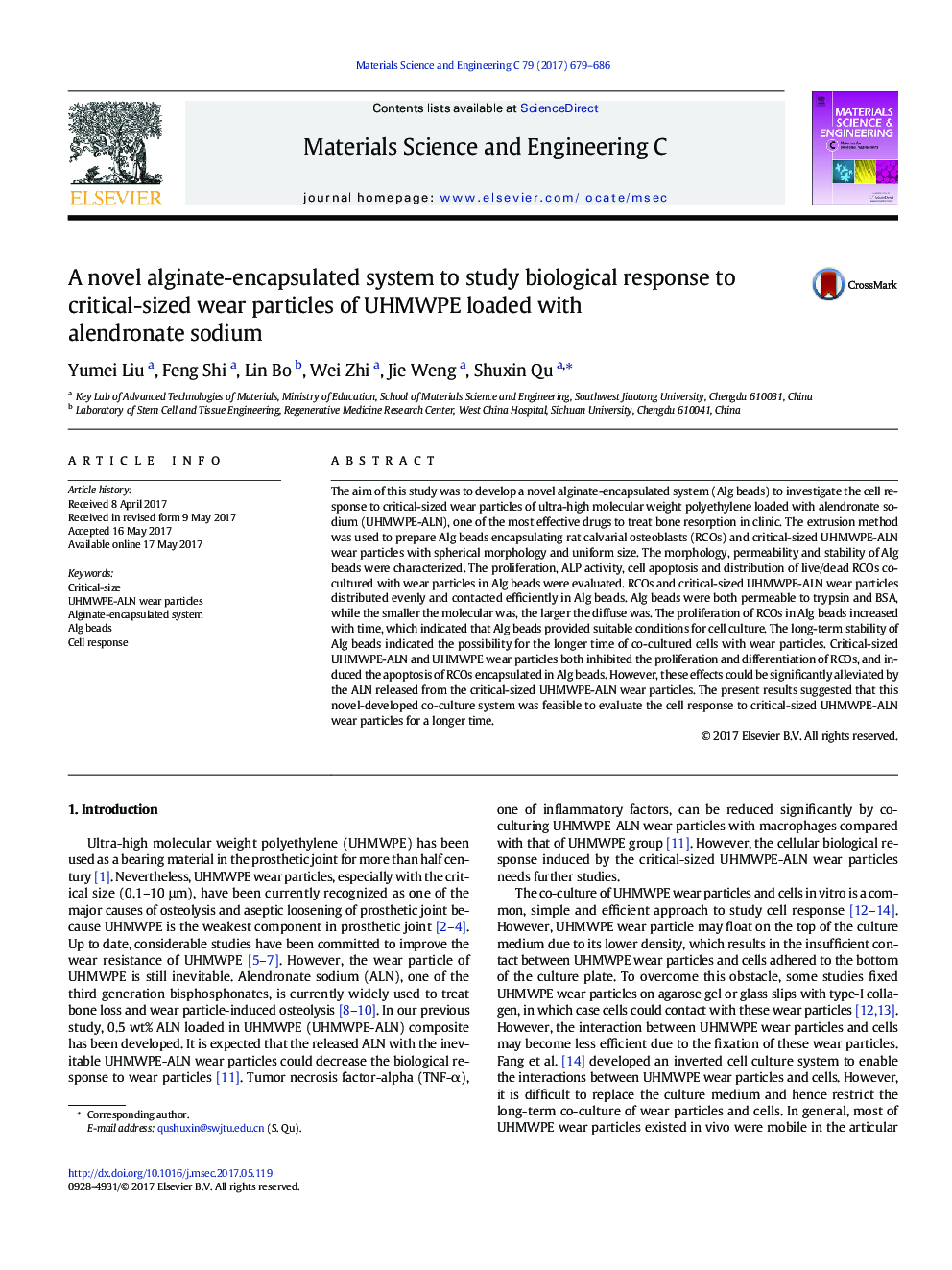| Article ID | Journal | Published Year | Pages | File Type |
|---|---|---|---|---|
| 5434774 | Materials Science and Engineering: C | 2017 | 8 Pages |
â¢Alg beads was firstly used to evaluate cell response to UHMWPE-ALN wear particles.â¢Spherical Alg beads-encapsulated RCOs and wear particles were extruded.â¢Alg beads provided long-term co-culture of cells and wear particles.â¢Wear particles and RCOs distributed evenly and contacted efficiently in Alg beads.â¢Released ALN enhanced proliferation and differentiation, while reduced death of RCOs.
The aim of this study was to develop a novel alginate-encapsulated system (Alg beads) to investigate the cell response to critical-sized wear particles of ultra-high molecular weight polyethylene loaded with alendronate sodium (UHMWPE-ALN), one of the most effective drugs to treat bone resorption in clinic. The extrusion method was used to prepare Alg beads encapsulating rat calvarial osteoblasts (RCOs) and critical-sized UHMWPE-ALN wear particles with spherical morphology and uniform size. The morphology, permeability and stability of Alg beads were characterized. The proliferation, ALP activity, cell apoptosis and distribution of live/dead RCOs co-cultured with wear particles in Alg beads were evaluated. RCOs and critical-sized UHMWPE-ALN wear particles distributed evenly and contacted efficiently in Alg beads. Alg beads were both permeable to trypsin and BSA, while the smaller the molecular was, the larger the diffuse was. The proliferation of RCOs in Alg beads increased with time, which indicated that Alg beads provided suitable conditions for cell culture. The long-term stability of Alg beads indicated the possibility for the longer time of co-cultured cells with wear particles. Critical-sized UHMWPE-ALN and UHMWPE wear particles both inhibited the proliferation and differentiation of RCOs, and induced the apoptosis of RCOs encapsulated in Alg beads. However, these effects could be significantly alleviated by the ALN released from the critical-sized UHMWPE-ALN wear particles. The present results suggested that this novel-developed co-culture system was feasible to evaluate the cell response to critical-sized UHMWPE-ALN wear particles for a longer time.
Graphical abstractDownload high-res image (212KB)Download full-size image
